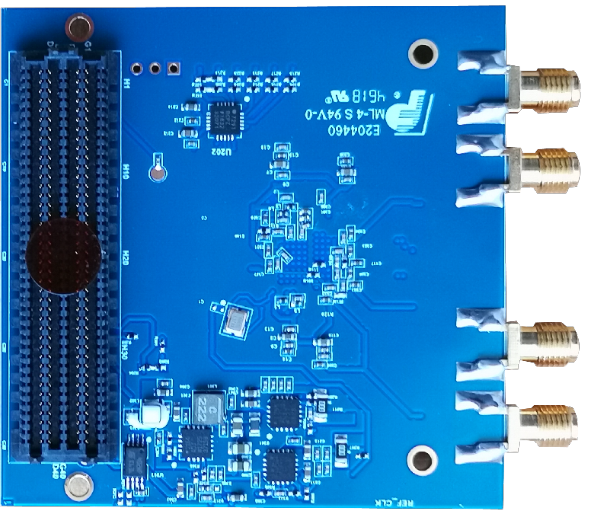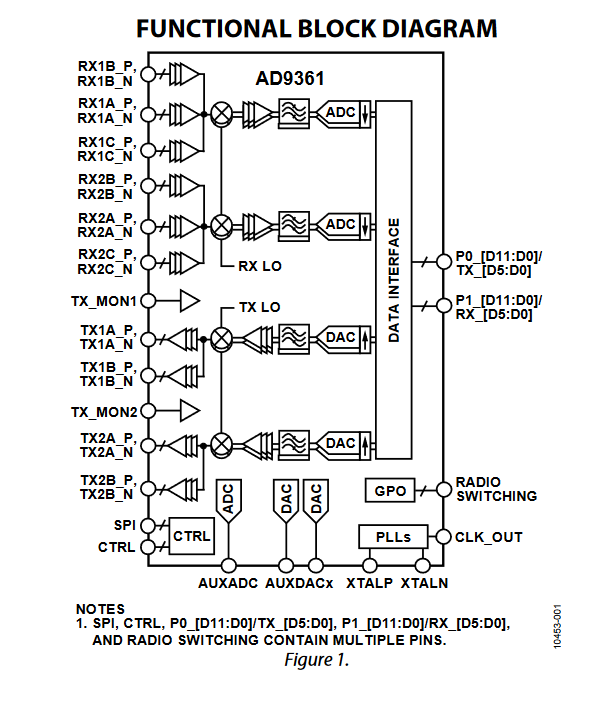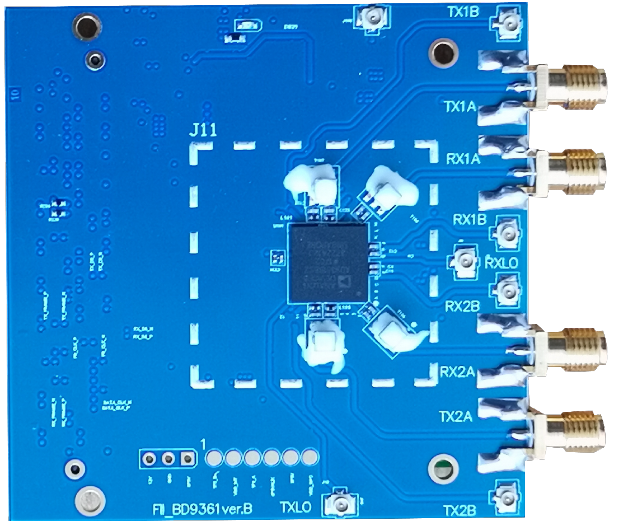AD9361 RF Agile Transceiver IC and System on Module (SOM)
Analog Devices’ RF transceiver solutions for communication, radio and base station applications
ADI’s AD9361 radio frequency (RF) Agile Transceiver™ specifically designed for 3G and 4G cellular communication systems such as Femtocell/picocell/microcell base stations. The AD9361BBCZ comes in a 144 pin CSPBGA package and the ADRV9361-Z7035 is a system on module (SOM). The AD-FMCOMMS2-EBZ-FMC board provides designers with a rapid prototyping environment that supports multiple communications protocols, including most licensed and unlicensed bands.
The programming flexibility and configurability of the AD9361 combined with the flexibility of a low-power software configurable radio, and its small footprint enables new levels of design versatility. An equally advanced range of customer ecosystem design support features this technology. It minimizes time-to-market constraints and reduces project risk.
Operating over a frequency range of 70 MHz to 6 GHz, the AD9361 is a complete radio design that combines multiple functions in a single chip. The RF agile transceivers integrate an RF front end, flexible mixed-signal baseband section, frequency synthesizers, two analog-to-digital converters, and two direct conversion receivers to simplify design and reduce bill of material cost.
The AD9361 supports channel bandwidth from less than 200 kHz to 56 MHz, and is highly programmable, offering the widest dynamic range available in the market today. The AD9361 is ideal for communication, radio, and base station applications.
- RF 2 × 2 transceiver with integrated 12-bit DACs and ADCs
- Band: 70 MHz to 6.0 GHz
- Supports TDD and FDD operation
- Tunable channel BW
- Dual receivers: 6 differential or 12 single-ended inputs
- 200 kHz to 56 MHz
- Superior receiver sensitivity with a noise figure < 2.5=””>
- RX gain control
- Real-time monitor and control signals for manual gain
- Independent automatic gain control
- Cellular, LTE
- Current recieving: 175 mA to 445 mA
- Current transmitting: 240 mA to 820 mA
- Temperature operating range: -40°C to +85°C
- Package/case: 144-LFBGA, SOM
AD9361 Product Details
The AD9361 is a high performance, highly integrated radio frequency (RF) Agile Transceiver™ designed for use in 3G and 4G base station applications. Its programmability and wideband capability make it ideal for a broad range of transceiver applications. The device combines a RF front end with a flexible mixed-signal baseband section and integrated frequency synthesizers, simplifying design-in by providing a configurable digital interface to a processor. The AD9361 receiver LO operates from 70 MHz to 6.0 GHz and the transmitter LO operates from 47 MHz to 6.0 GHz range, covering most licensed and unlicensed bands. Channel bandwidths from less than 200 kHz to 56 MHz are supported.
The two independent direct conversion receivers have state-of-the-art noise figure and linearity. Each receive (RX) subsystem includes independent automatic gain control (AGC), dc offset correction, quadrature correction, and digital filtering, thereby eliminating the need for these functions in the digital baseband. The AD9361 also has flexible manual gain modes that can be externally controlled. Two high dynamic range analog-to-digital converters (ADCs) per channel digitize the received I and Q signals and pass them through configurable decimation filters and 128-tap finite impulse response (FIR) filters to produce a 12-bit output signal at the appropriate sample rate.
The transmitters use a direct conversion architecture that achieves high modulation accuracy with ultralow noise. This transmitter design produces a best in class TX error vector magnitude (EVM) of <−40 dB, allowing significant system margin for the external power amplifier (PA) selection. The on-board transmit (TX) power monitor can be used as a power detector, enabling highly accurate TX power measurements.
The fully integrated phase-locked loops (PLLs) provide low power fractional-N frequency synthesis for all receive and transmit channels. Channel isolation, demanded by frequency division duplex (FDD) systems, is integrated into the design. All VCO and loop filter components are integrated. The core of the AD9361 can be powered directly from a 1.3 V regulator. The IC is controlled via a standard 4-wire serial port and four real-time input/output control pins. Comprehensive power-down modes are included to minimize power consumption during normal use. The AD9361 is packaged in a 10 mm × 10 mm, 144-ball chip scale package ball grid array (CSP_BGA).



